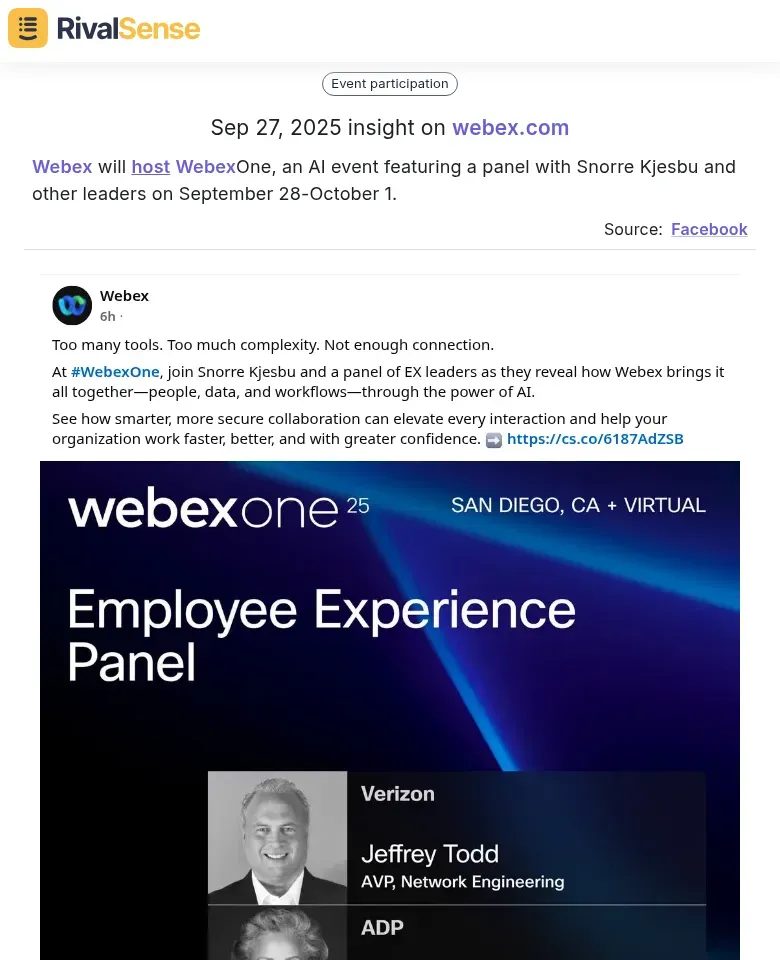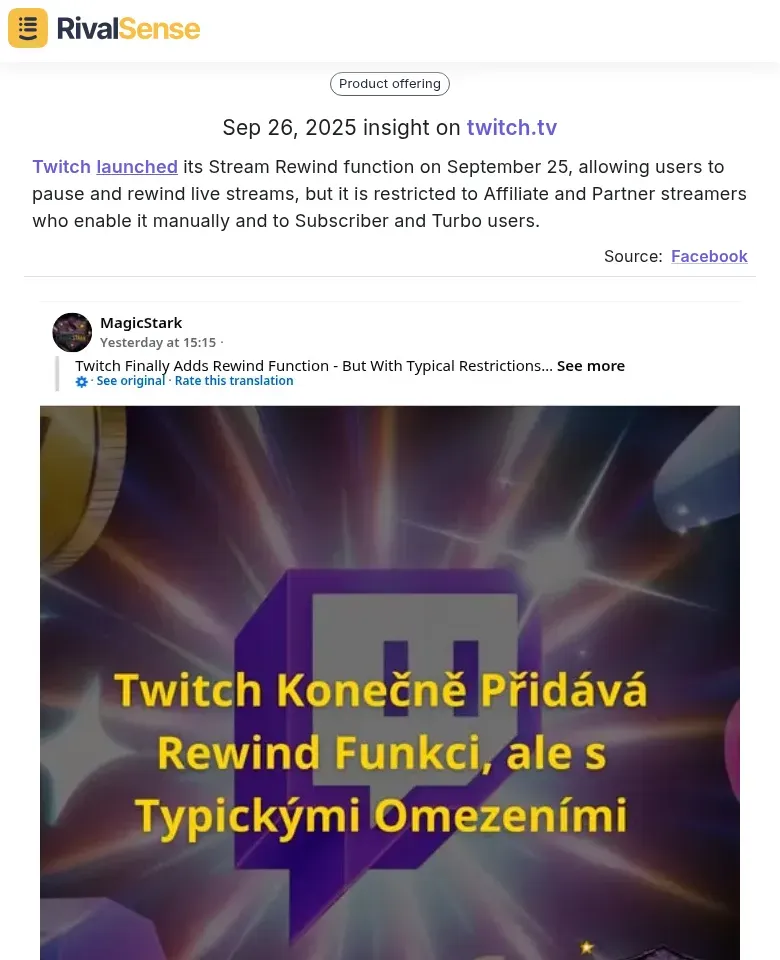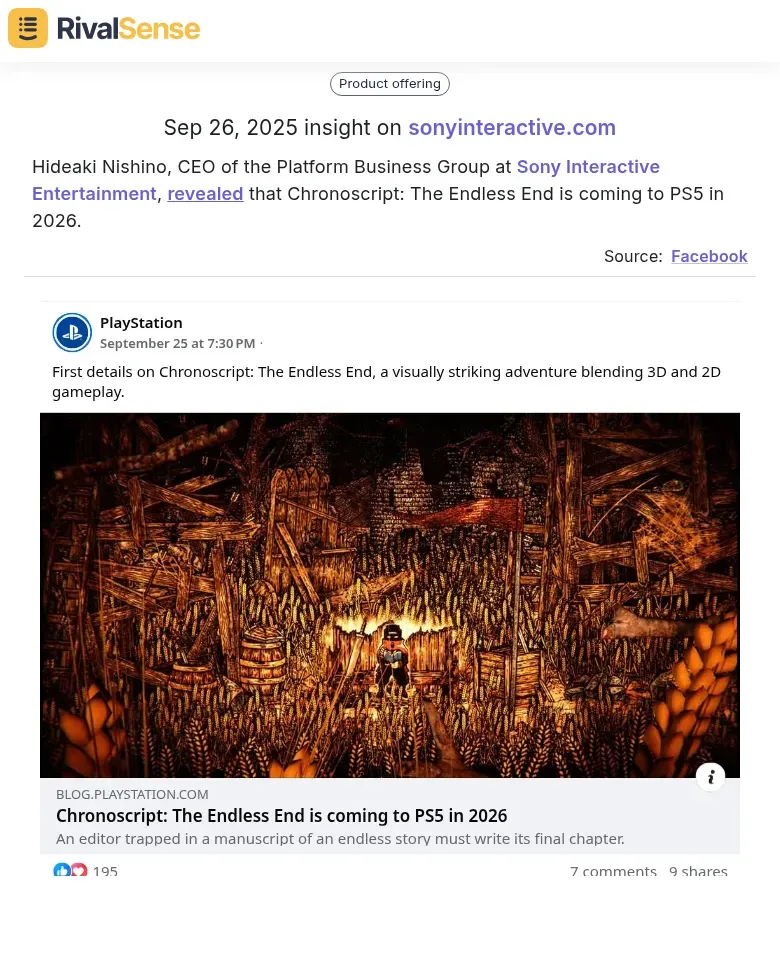Quick Facebook Hacks for Competitor Branding Insights
Facebook offers powerful real-time competitor intelligence that goes beyond basic monitoring. By tracking competitors' Facebook activities, you gain immediate insights into their content strategy, audience engagement patterns, and promotional tactics. This real-time data reveals what resonates with your shared target market, helping you identify emerging trends before they become mainstream.
The strategic benefits are substantial: you can benchmark your performance against industry leaders, uncover content gaps in your own strategy, and anticipate competitor moves. This intelligence informs everything from product development to marketing campaigns, ensuring your decisions are data-driven rather than reactive.
To set up systematic monitoring:
- ✅ Create a dedicated competitor list with 5-10 key players
- ✅ Use Facebook's 'Pages to Watch' feature for automated tracking
- ✅ Monitor engagement metrics (likes, comments, shares) weekly
- ✅ Track ad campaigns through Facebook's Ad Library
- ✅ Analyze posting frequency and content types
💡 Practical tip: Set up Google Alerts for competitor mentions and cross-reference with Facebook activity to understand their full digital footprint. This systematic approach transforms random observations into actionable competitive intelligence.
Analyzing Competitor Events and Announcements
Competitor events reveal strategic priorities before they hit the market. By monitoring these events, you can anticipate shifts in industry focus and adjust your own plans proactively. For example, tracking event themes and speaker lineups on Facebook signals upcoming product launches or expansions into new markets.
Event insights are valuable because they highlight competitors' investment areas and partnership opportunities. Consider this RivalSense insight: Webex will host WebexOne, an AI event featuring a panel with Snorre Kjesbu and other leaders on September 28-October 1.  This type of intelligence helps you gauge competitors' emphasis on emerging technologies like AI, enabling you to align your strategy with market trends.
This type of intelligence helps you gauge competitors' emphasis on emerging technologies like AI, enabling you to align your strategy with market trends.
Actionable steps:
- 📅 Create a monthly checklist to monitor event dates and speaker backgrounds
- 🔍 Analyze session keywords and attendee engagement
- 📊 Compare year-over-year event changes to identify trend shifts
💡 Pro tip: Use Facebook's event details to understand target audiences and potential collaboration prospects, refining your competitive positioning.
Monitoring Product Launches and Feature Updates
Monitoring product launches and feature updates on Facebook provides invaluable competitive intelligence. It allows you to stay ahead of innovation curves and identify gaps in your own offerings. Observing how competitors roll out new features—such as through limited betas or broad releases—reveals their testing and prioritization strategies.
Product launch insights are crucial for understanding competitor innovation and target audience segmentation. For instance, RivalSense tracked that Twitch launched its Stream Rewind function on September 25, allowing users to pause and rewind live streams, but it is restricted to Affiliate and Partner streamers who enable it manually and to Subscriber and Turbo users.  This example shows how access restrictions can inform your own launch plans, helping you tailor features to specific user segments and avoid missteps.
This example shows how access restrictions can inform your own launch plans, helping you tailor features to specific user segments and avoid missteps.
Practical monitoring checklist:
- 🔔 Set up Facebook alerts for competitor names and keywords
- 📱 Regularly review competitor Pages, Stories, and Reels for announcements
- 🎯 Analyze language and visuals to deduce target audiences
- 💬 Engage with content to see featured updates firsthand
💡 Quick hint: Use these insights to brainstorm adaptations for your product roadmap, ensuring timely and differentiated launches.
Gleaning Insights from Executive Communications
Executive communications on Facebook reveal strategic direction before official announcements. They often provide early warnings of shifts in company priorities or upcoming initiatives, giving you a head start in adjusting your strategy. By analyzing patterns in leaders' posts, you can infer focus areas like new technologies or market expansions.
Executive insights are valuable because they offer a glimpse into long-term plans and potential disruptions. A RivalSense example: Hideaki Nishino, CEO of the Platform Business Group at Sony Interactive Entertainment, revealed that Chronoscript: The Endless End is coming to PS5 in 2026.  This kind of intelligence helps you anticipate market developments, such as new product lines, and refine your competitive timeline.
This kind of intelligence helps you anticipate market developments, such as new product lines, and refine your competitive timeline.
Weekly tracking checklist:
- 👥 Monitor key executives' Facebook posts
- 🔁 Note recurring themes and language patterns
- 📈 Analyze engagement on strategic announcements
- ⏱️ Compare timelines across competitors for trends
💡 Efficiency tip: Use Facebook's 'Save Post' feature to organize insights by competitor and theme, making analysis more streamlined.
Practical Facebook Monitoring Techniques
Efficient competitor tracking on Facebook starts with the right tools. Implementing a systematic approach saves time and ensures you capture all relevant data, from engagement metrics to ad campaigns. Combining native Facebook features with external tools automates the process and reduces manual effort.
Tool recommendations:
- 🛠️ Use Facebook's 'Pages to Watch' in Insights for basic metrics
- 🔊 Leverage social listening tools like Brand24 for mentions and sentiment
- 🤖 Automate with RivalSense to track posts, ads, and growth across platforms
Alert setup guide:
- 📧 Configure Google Alerts for competitor names and campaigns
- 🔔 Enable Facebook notifications for new posts from key Pages
- 🗂️ Set keyword alerts in social media tools for launches or crises
Documentation framework:
| Metric | Tracking Frequency | Key Takeaways |
|---|---|---|
| Post date | Weekly | Identify peak engagement times |
| Content type | Bi-weekly | Spot high-performing formats |
| Engagement (likes, shares) | Monthly | Benchmark against competitors |
💡 Best practice: Schedule weekly check-ins to update your tracking spreadsheet and adjust alerts based on emerging patterns.
Applying Insights to Enhance Your Brand Strategy
Once you've gathered competitor data from Facebook, translate it into actionable strategies. This process helps you stay competitive and innovative in a dynamic market by learning from others' successes and failures. Adapt insights to fit your brand voice rather than copying directly, ensuring authenticity and differentiation.
Actionable checklist:
- ✅ Identify top-performing competitor posts and analyze audience reactions
- ✅ Adapt successful elements (e.g., video formats) with your unique twist
- ✅ Measure your results and iterate based on performance
- ✅ Avoid pitfalls like imitation; focus on underlying why strategies work
💡 Strategic tip: Continuously monitor competitor activities and refine your approach quarterly, using tools to automate reporting and keep your strategy agile.
Streamline Your Monitoring with RivalSense
Manually tracking competitors on Facebook can be time-consuming. Tools like RivalSense automate this process by monitoring product launches, pricing updates, events, partnerships, regulatory changes, management shifts, and media mentions across websites, social media, and registries. It delivers consolidated weekly email reports, saving you hours and providing deeper insights.
🚀 Ready to enhance your competitor intelligence? Try RivalSense for free at https://rivalsense.co/ and get your first competitor report today to start making data-driven decisions effortlessly.
📚 Read more
👉 FinTech Competitor Journey Mapping: A Strategic Benchmarking Guide
👉 Master Competitor Event Tracking: Practical Insights for B2B Leaders
👉 Unlocking Competitor Strategies Through Event Analysis
👉 Track Key Account Metrics: A Practical Guide for Business Leaders
👉 Key Account History Tracking Framework for B2B Market Research
